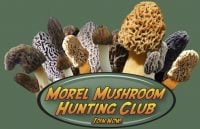Other Chanterelle Species
Cantharellus amethysteus:
Cantharellus amethysteus or Amethyst Cantharellus is a species of Cantharellus from Europe.
Cantharellus flavus:
Cantharellus flavus is a species of fungus in the genus Cantharellus. Found in North America, it was described in 2013.
Cantharellus garnieri:
New species in subtropical and tropical America, and the New Caledonian C. garnieri.
Cantharellus ianthinoxanthus:
Cantharellus lilacinopruinatus:
Cantharellus melanoxeros:
BLACKENING CHANTERELLE
Cantharellus quercophilus:
Basidiome 24-35 mm high. Pileus small, < 35 mm diam., irregular in outline, subplane with an involuted margin in the very young stages, very soon depressed in the center, then infundibuliform with an irregular and often deeply lobed margin; margin slightly incurved, smooth, brown.; the surface dull, smooth, continuous, not yellow but pale brown (5D5-6) to greyish yellow or blond (4B3-5, 4CD4-6), sometimes with a darker, concentrical zone towards the margin. Hymenophore cream to pale yellowish (2A2-3), of rather well-developed, thick and relatively spaced gill folds, decurrent, not inter-veined, ca. 2-3 mm high, sparsely forking. Stipe 13-18 × 6-10(15) mm, irregularly subcylindrical or rapidly widening upwards and conical to almost triangular, massif and fleshy, concolorous to or paler than cap. Context grayish buff (but water-soaked) and with a faint but distinct lilac tinge, when handled or on injury yellowing, then rapidly reddish brown to rusty brown. Smell very weak. Taste slightly acrid. Spore print not obtained.
Spores (6.3) 7.6 (8.3) × (4.4) 4.9 (5.6) μm, Q = (1.3) 1.5 (1.8), n = 20, ellipsoid to egg-shaped, sometimes slightly reniform in side view, smooth. Basidia (2-4)5-6 spored, 60-85 × 7-9 μm, slightly undulate-sinuose and narrowly clavate. Cystidia none. Suprapellis a cutis made up of cylindrical hyphae, mostly 4-5 μm wide, with extremities near the surface remaining thin-walled, having somewhat more densely disposed septa and some branched at the 2 to 4th subterminal cell, but otherwise hardly differentiated; the terminal cell cylindrical or slightly widening near the tip, 30-60(70) × (5) 6-7 (8.5) μm, mostly obtuse-rounded, some subapically slightly constricted. Pileocystidia none. Clamp connections abundant in all parts of the basidiome.
Holotype: UNITED STATES. Texas: Burleson Co., Jackson’s farm near Caldwell, 30 33.630N 96 50.099W, on sandy soil in a Post oak savannah, 27 July 2007, Buyck & Lewis leg., Buyck 07.097 (PC holotype).
Habitat and ecology: In grass under Post oak (in this case Quercus stellata Wangenh. var. margaretta (Ashe) Sarg), an ectomycorrhizal, native tree of the Beech family (Fagaceae) that is abundant throughout the Southeastern and South Central United States. It forms extensive pure stands known as “Cross timbers” in the prairie transition area of central Oklahoma and Texas and likes well drained, sandy soils that are often low in organic matter and deficient in nutrients (Bray 1904).
Cantharellus septentrionalis:
Cantharellus tabernensis:
Cantharellus tabernensis is a species of fungus in the family Cantharellaceae that was described as new to science in 1996. It is found in the southern United States, where it grows in mixed pine and hardwood forests, close to mature Pinus elliottii trees. Fruit bodies have a yellowish-brown cap with a slightly darker brown center, and a bright orange gills and stipe. The specific epithet tabernensis refers to the meeting house at the Stennis Space Center Recreation area, near the type locality.
























